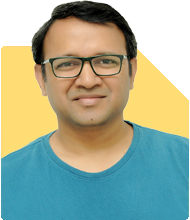34, No Savings, ₹35,000 Salary: How Do I Retire at 50 in My Hometown?

I am 34 years old and have no savings or EMIs. I live with my parents and earn Rs 35,000 a month with an annual bonus of Rs 18,000. I want to retire at 50 and settle in my home town. What is the best way for me to plan and invest for my retirement?
1. Determine Your Retirement Corpus
• To retire at 50, you need to calculate how much you’ll need to live comfortably. Consider your current lifestyle and future expenses.
• You can aim for a corpus that supports 70-80% of your pre-retirement income annually. For example, if you plan to need Rs 50,000 per month (Rs 6 lakh annually) in retirement, you'll need a corpus of Rs 1.5 to Rs 2 crore, depending on the duration of your retirement.
2. Build an Emergency Fund
• Set aside an emergency fund of 3-6 months of living expenses. This provides financial security in case of unexpected situations. You can keep this fund in a high-interest savings account or liquid mutual funds.
3. Invest in Retirement-Specific Instruments
• Public Provident Fund (PPF): PPF is a great long-term investment for retirement due to its tax benefits and safety.
• National Pension Scheme (NPS): NPS is another good option that offers both equity and debt exposure. It's designed for retirement and provides tax benefits.
• Mutual Funds: Start a Systematic Investment Plan (SIP) in equity mutual funds (consider a mix of large-cap, mid-cap, and hybrid funds) for higher returns over the long term. Even though mutual funds come with some risk, they can offer substantial growth over time.
4. Invest in Stocks (for higher returns)
• If you're comfortable with higher risk, you can invest in individual stocks or equity mutual funds to generate wealth. Ensure to do thorough research before investing or consider opting for managed portfolios if you're new to investing.
5. Keep Your Expenses Low
• Since you live with your parents and don’t have major expenses, this is an opportunity to save a significant portion of your income. Consider saving and investing 30-50% of your monthly income in the beginning.
6. Automate Your Investments
• Set up automatic monthly transfers into your investment accounts (like SIPs in mutual funds) to ensure consistent investing.
7. Maximize Tax Benefits
• Contribute to tax-saving instruments like ELSS (Equity Linked Savings Schemes), PPF, and NPS to reduce your taxable income.
• For long-term capital gains, keep in mind the tax exemptions and favorable tax rates for certain investment vehicles like PPF and NPS.
8. Increase Investment with Income Growth
• As your salary increases over the years, make sure to increase your investment amount accordingly. If you receive additional bonuses or increments, allocate a portion of them to your retirement fund.
9. Diversify Your Portfolio
• Diversification can help manage risk. Apart from mutual funds, PPF, and NPS, you could consider investments in gold or real estate if suitable for your situation.
10. Track and Rebalance Your Portfolio
• Regularly review your portfolio and rebalance it based on your retirement goals and market conditions. It’s also important to monitor inflation rates and adjust your goals accordingly.
Example Plan (Rs 35,000/month income):
• Monthly Savings (30% of income): Rs 10,500
• Bonus (Annually): Rs 18,000, invest 50% of it (Rs 9,000)
• Total Monthly Investment: Rs 10,500 + Rs 750 (bonus contribution) = Rs 11,250
• Invest in equity mutual funds via SIP: Rs 8,000
• PPF: Rs 2,000
• NPS: Rs 1,250
Potential Returns:
Assuming a return of 12% per annum from equity investments, you could accumulate a substantial corpus over time. If you start early, even small, consistent investments can lead to significant wealth.
Key Takeaways:
• Start investing early to take advantage of compounding.
• Aim to save and invest a portion of your income regularly.
• Focus on building a retirement-specific portfolio with tax-saving benefits.
• Gradually increase your savings as your income grows.
You may like to see similar questions and answers below
Ramalingam Kalirajan |10894 Answers |Ask -Follow
Mutual Funds, Financial Planning Expert - Answered on May 27, 2024
Ramalingam Kalirajan |10894 Answers |Ask -Follow
Mutual Funds, Financial Planning Expert - Answered on Sep 11, 2025
Ramalingam Kalirajan |10894 Answers |Ask -Follow
Mutual Funds, Financial Planning Expert - Answered on Aug 28, 2025
Patrick Dsouza |1429 Answers |Ask -Follow
CAT, XAT, CMAT, CET Expert - Answered on Dec 16, 2025
Nayagam P P |10858 Answers |Ask -Follow
Career Counsellor - Answered on Dec 16, 2025
Nayagam P P |10858 Answers |Ask -Follow
Career Counsellor - Answered on Dec 16, 2025
Samraat Jadhav |2510 Answers |Ask -Follow
Stock Market Expert - Answered on Dec 16, 2025
Samraat Jadhav |2510 Answers |Ask -Follow
Stock Market Expert - Answered on Dec 16, 2025
Nayagam P P |10858 Answers |Ask -Follow
Career Counsellor - Answered on Dec 16, 2025
Nayagam P P |10858 Answers |Ask -Follow
Career Counsellor - Answered on Dec 16, 2025
Ramalingam Kalirajan |10894 Answers |Ask -Follow
Mutual Funds, Financial Planning Expert - Answered on Dec 16, 2025
Nitin Narkhede |113 Answers |Ask -Follow
MF, PF Expert - Answered on Dec 15, 2025
Nitin Narkhede |113 Answers |Ask -Follow
MF, PF Expert - Answered on Dec 15, 2025












.jpg)













